 Interviewing brings up a range of reactions in everyone on both sides of the interview table, from anxiety to excitement. The research tells us that interviewing has a low correlation with actual future performance, so it’s no wonder that we have mixed feelings, especially considering the significant output of time, energy and financial resources that go into successfully recruiting, interviewing, and hiring excellent employees.
Interviewing brings up a range of reactions in everyone on both sides of the interview table, from anxiety to excitement. The research tells us that interviewing has a low correlation with actual future performance, so it’s no wonder that we have mixed feelings, especially considering the significant output of time, energy and financial resources that go into successfully recruiting, interviewing, and hiring excellent employees.
Better interviews benefit everyone and lead to stronger, more effective organizations. I’ve compiled best practices that help employers rethink the traditional interviewing process, avoid common pitfalls, and use research-based best practices. Please note that this brief article doesn’t address the full range of understanding hiring with a DEI lens, a topic that hopefully is part of your organization’s ongoing anti-racist and equitable education, training and development.
Be on the Candidate’s Side
I think there is zero value in trick questions, trying to rattle the candidate to see how they respond, or asking questions that rely on one right answer or insight to pass or fail. I feel the same way about how the interview scene is set. Creating an intimidating panel that feels more like entering a courtroom than a conversation reduces your chances of actually getting to know the person you’re meeting. When placed under stress, our brains can be flooded with stress hormones that limit our full range of creative thought and emotion. You want to meet the whole person, not a stress response.
Instead, be warm, welcoming, affirming and gracious. Treat them like you would an honored guest visiting your home for the first time, and do all you can to set them at ease. If you’re meeting in person, offer them water, tea or coffee. Place them in the most comfortable seat available without distractions, like facing into a glaringly bright window. Let them know how happy you are that they took the time to meet with you, and mention one or two things that really stood out to you in their cover letter or resume. Make a little small talk to help them ease into the situation. Be sure that everyone on the interview team does the same and takes a moment to connect as humans. Avoid seating the candidate on one side and lining up the panel on the other side of the table. Instead, sit as you would at lunch with friends.
Remember, this is a two-way conversation. Hopefully, the candidate is also interviewing and assessing you and your team for fit. Make sure that how you treat them reflects your organization’s values and who you are as a manager right from the start. (Obviously, some of these tips apply to in-person meetings, which aren’t a part of our shelter in place current reality.)
Talk Less, Listen More
In the best interviews, the candidate will do 80-90% of the talking. Why? The more you hear from the candidate, the more data points you have. If you drill into one question about technical expertise, you’ll get a limited data point and leave without breadth as well as depth of understanding of the person you’re meeting.
“Winging It” Doesn’t Work
It’s tempting to confuse keeping it casual, relaxed and fun with going in without a plan other than “just get to know each other.” It’s convenient because you don’t have to do any upfront work and can feel like you’re showing the candidate that you’re not stuffy. However, you are likely to get very unreliable data and have considerable bias in your results.
It is well worth the time and effort to design a number of short answer questions to increase your data set. Using an equity lens means that you’ll ask the same questions of each candidate and be as uniform as you can. This doesn’t mean you have to be rigid and can’t ask follow up questions, but uniformity is an excellent antidote against implicit bias and our tendency to gravitate toward people who are similar to us.
Don’t Go It Alone
Using an equity lens also means that we’ll put together a diverse interview team. This is an extremely important safeguard against bias and helps us develop a more robust view of the candidate than our single point of view. Make sure that the team is as diverse as it can be in terms of race, gender, and positional power while keeping it small enough to avoid intimidating the candidate. Three to five people is a good target size for most positions. If you’re hiring for the a C-suite, you may have many more people meet the candidate.
Ask High-Value, Aligned Questions
Avoid quirky “fun” questions. “If you were a vegetable, what would you be and why?” Unless you’re an organic farm and you’re all participating in an ice breaker to start your interview, this has no place in an interview. It gives you little if any data and favors certain personality styles, while putting others at a disadvantage. It also reflects poorly on you and your team and wastes valuable time.
Align with your organization’s mission, vision and values. After you draft a potential pool of questions, do a cross-check and think about your questions from an outsider’s point of view. Are you communicating your values and principles in the things you’re asking about, and in the way you’ve worded your questions? For example, if one of your stated organizational values is kindness and you ask, “How would you deal with a person on your team who always acts like a jerk?”, you’re essentially telling the candidate that your values are just words on paper (this is an actual example, by the way). Be sure to include questions that help you learn about the candidate’s values and then keep an ear out for alignment, or lack thereof, as the interview goes on.
Use backward design. What are the skills, competencies, dispositions, and qualities you hope for in your ideal hire? Get clear on what those are and then design questions to learn about those things. Distribute your questions across your categories, giving the most time to the areas that are most important to you.
Ask open-ended vs. closed questions. You likely already know this, but we’ve all made the mistake of wording a question that will get us a yes/no answer when what we want is an in-depth response. For example, “Do you have values that guide and inform your leadership style?” actually can be answered with Yes or No. The question you thought you were asking may be better phrased as, “We have a strong commitment to values-based leadership in our organization. Can you tell us about your core values and how they inform and guide your leadership?”
Ask Questions Based in Experience, not Theory.
If you do nothing else, do this. Interviews that ask about actual experience and behavior are the best predictors of on the job success.
It may be subtle, but there’s an important difference between asking, “How would you handle a conflict with a coworker?” and “Tell us about a time when you found yourself in conflict with a coworker. How did you deal with the situation?” The first question is hypothetical, so you’ll get a theoretically, hypothetical response. It’s easy to talk about what you should do than what you did do. The former tells you what they know, and the latter tells you about who they are and how they act. There is a very weak correlation between what people say this will do and their actual behavior.
It’s likely that a candidate has anticipated this question and has an example ready. In keeping with the idea of setting the candidate up to be comfortable and succeed, give them the opportunity to share their story. Then, use follow up questions to probe a little deeper. For example, “You mentioned that there was an initial challenge with getting managerial alignment around your proposal. Can you tell us how you responded to that challenge, and what did or didn’t work?”
Include Work Skills Assessments
In keeping with the point above, avoid providing the candidate with a hypothetical situation and asking them what they would do. Instead, supplement your interview with a performance task that they will encounter on the job. For example, if you’re hiring an executive assistant, you can ask them to sort and prioritize an Inbox. This data is especially useful as a tiebreaker between two equally good candidates. Skills assessments have about a 25% correlation with actual future performance, which is stronger than interview questions alone.
